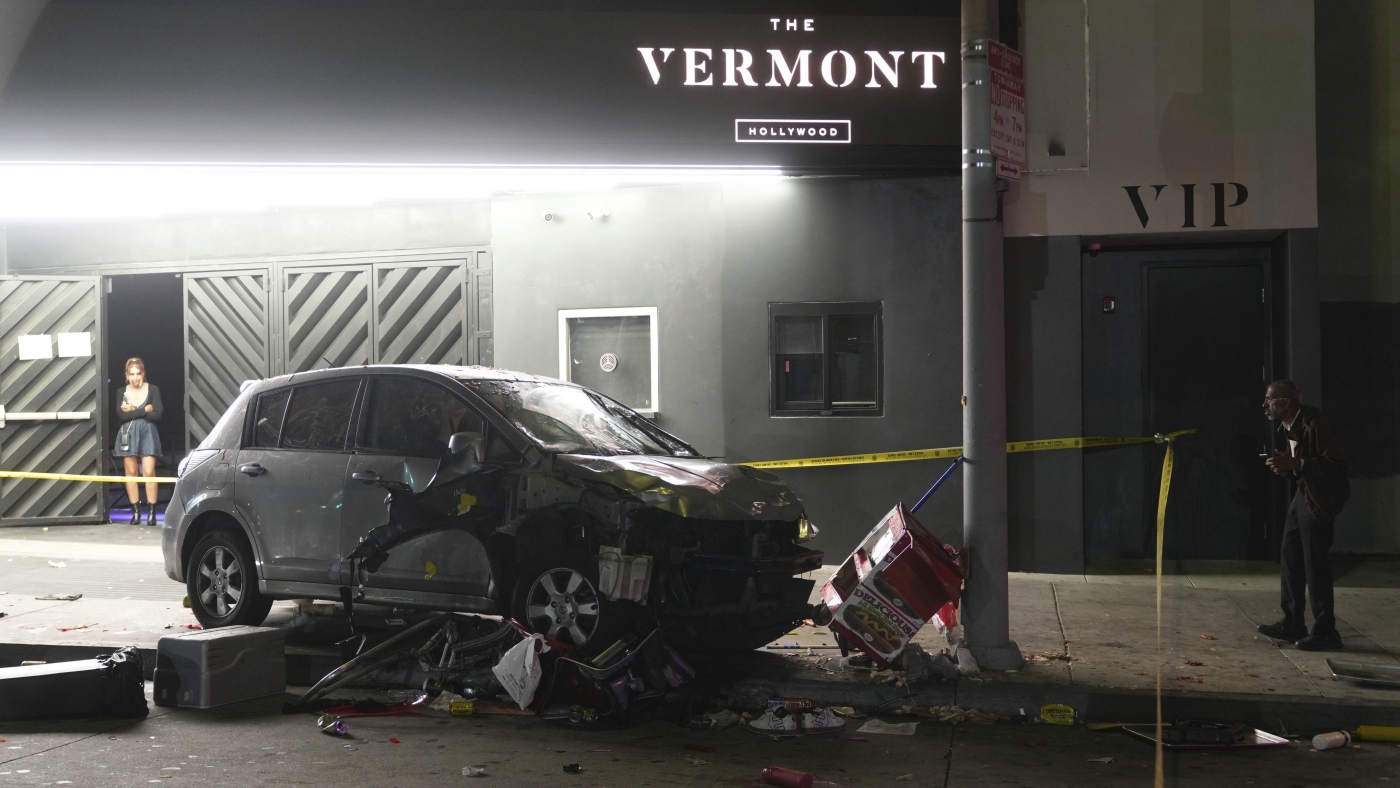Analysis of the Vehicle Incident in Los Angeles
Introduction: A Tragedy Unfolds
The recent vehicle incident on Santa Monica Boulevard in East Hollywood has left the Los Angeles community reeling. With over 30 people injured, the event has sparked urgent questions about public safety, emergency response, and the underlying causes of such tragedies. This report delves into the details of the incident, examining the immediate aftermath, potential contributing factors, and broader implications for community safety.
The Incident: A Night of Chaos
A Crowded Nightclub Scene
The incident occurred early Saturday morning near a nightclub, where a crowd of people had gathered, likely waiting to enter or exit the establishment. The high concentration of pedestrians in a confined area amplified the impact of the vehicle collision, resulting in widespread injuries. This detail underscores the importance of crowd management and pedestrian safety in urban nightlife districts.
The Vehicle: A Silver Car with a Broken Taillight
Initial reports describe the vehicle involved as a silver car with a broken taillight. This detail, while seemingly minor, could be significant in reconstructing the events leading up to the incident. A broken taillight might indicate prior damage to the vehicle, suggesting a mechanical issue or a history of reckless driving. Investigators will likely focus on this detail to determine whether the vehicle’s condition played a role in the collision.
Emergency Response and Investigation
Swift Action by First Responders
The Los Angeles Fire Department (LAFD) responded rapidly to the scene, providing immediate medical assistance and transporting the injured to nearby hospitals. Capt. Adam Van Gerpen, the LAFD’s public information officer, has been a key source of information, confirming the number of injuries and the severity of the victims’ conditions. The swift response highlights the importance of well-coordinated emergency services in mitigating the impact of such incidents.
Ongoing Investigation
The Los Angeles Police Department (LAPD) is leading the investigation, which will likely focus on identifying the driver, determining the cause of the incident, and assessing potential criminal charges. The investigation will need to consider various factors, including the driver’s state of mind, the vehicle’s condition, and any potential witnesses or surveillance footage.
Unanswered Questions and Potential Scenarios
Intent, Impairment, and Motive
The most pressing question surrounding the incident is whether it was an accident or a deliberate act. Reports suggest that the driver may have lost consciousness, raising the possibility of a medical emergency. However, other factors, such as impaired driving or intentional malice, cannot be ruled out without further investigation.
Conflicting Reports and Complexities
Conflicting reports have emerged regarding the driver, including claims that they were shot after the incident. The circumstances of this shooting remain unclear, adding another layer of complexity to the situation. Investigators will need to carefully examine these details to piece together a coherent narrative of the events.
Possible Explanations
Based on the available information, several scenarios could explain the incident:
- Accident: A sudden mechanical failure or loss of control due to road conditions.
- Medical Emergency: A seizure, heart attack, or other medical episode affecting the driver.
- Impaired Driving: Alcohol or drug impairment leading to reckless driving.
- Intentional Act: A deliberate attack on the crowd, motivated by personal grievances or ideological reasons.
Each of these scenarios presents different implications for the investigation and potential legal consequences.
Broader Implications for Public Safety
Pedestrian Safety in Urban Areas
The incident highlights the need for enhanced pedestrian safety measures in urban areas, particularly in nightlife districts. Barriers, traffic calming measures, and improved crowd control protocols could help prevent similar incidents in the future. Additionally, nightclubs and other establishments should review their security measures to ensure the safety of patrons waiting outside.
Media Responsibility and Sensitivity
The media plays a crucial role in shaping public perception of such incidents. It is essential for news organizations to report the facts accurately and avoid sensationalism. Given the sensitive nature of the event, it is important to rely on verified sources and avoid speculation. The media should also respect the privacy of the victims and their families, avoiding intrusive or exploitative coverage.
Community Resilience and Support
The incident has undoubtedly shaken the Los Angeles community. Grief, anger, and fear are likely to be prevalent emotions. However, communities often demonstrate remarkable resilience in the face of tragedy. Support networks will emerge, offering assistance to the victims and their families. Counseling services and other resources will be needed to help people cope with the emotional impact of the event.
Moving Forward: Lessons Learned and Preventative Measures
Strengthening Traffic Safety Regulations
The incident underscores the need for stricter traffic safety regulations, particularly in areas with high pedestrian traffic. This may involve implementing stricter penalties for reckless driving, enhancing vehicle maintenance standards, and improving road infrastructure to protect pedestrians.
Enhancing Crowd Control Measures
Nightclubs and other establishments should review their crowd control measures to ensure the safety of patrons waiting outside. This may involve hiring additional security personnel, installing barriers, and implementing clear protocols for managing large crowds.
Addressing Underlying Social and Mental Health Issues
The incident also highlights the need to address underlying social and mental health issues that may contribute to violence. This may involve increasing access to mental health services, promoting community dialogue, and implementing early intervention programs to identify and support individuals at risk.
Conclusion: A Call for Vigilance and Community Cooperation
The vehicle incident in Los Angeles serves as a stark reminder of the potential for tragedy in our communities. It underscores the need for vigilance, community cooperation, and a commitment to ensuring public safety. By working together, residents, businesses, and government agencies can create a safer and more secure environment for everyone. The lessons learned from this incident should guide future efforts to prevent similar tragedies and foster a sense of unity and resilience in the face of adversity.

